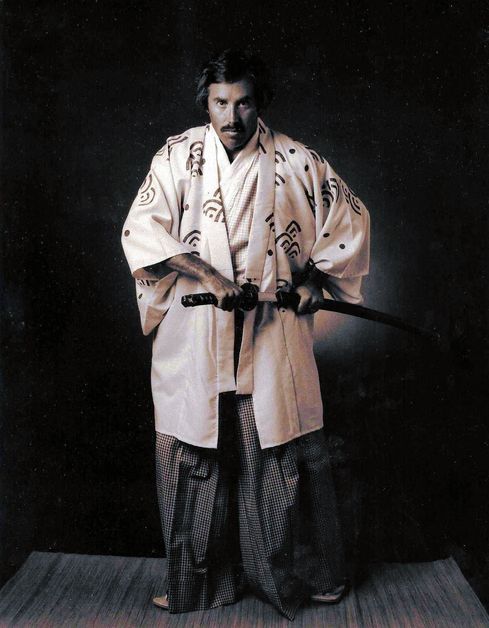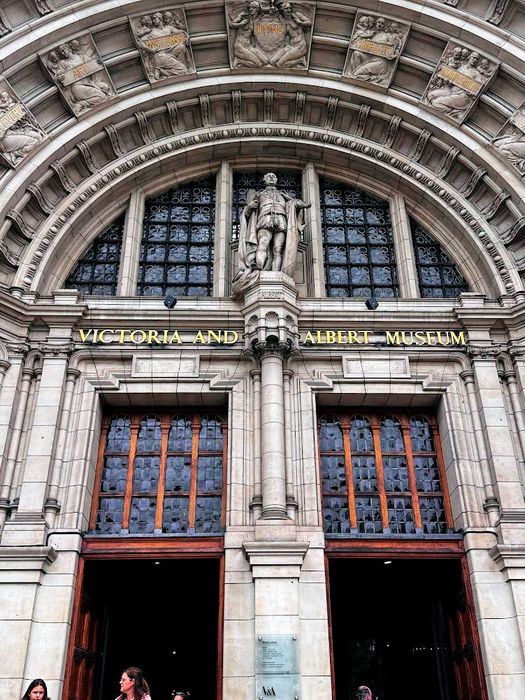MARLA AND I RETURNED TO THE CROW MUSEUM OF ASIAN ART WITH THE GRANDKIDS

I have had a number of passions over the years and one of them is a love of Asian art. Japan captured my interest as a small boy when my mom showed me a Japanese Satsuma bowl given to her from her mother. While taking care of grandchildren in Dallas last week I read about an exhibit of Japanese antiques at the Crow Museum of Asian Art. I had to see it and bring the kids along as well! I’ve included two blogpost links which describe our journey in Japanese antiques: https://gentryconnects.net/?p=9175 and https://gentryconnects.net/?p=9237. The photo above is me channeling my Samurai spirit at Japantown in San Francisco.

The entire museum was dedicated to displaying Japanese antiques from the renowned collector, Jeffrey Montgomery, based in Switzerland. It is the largest Japanese collection outside of Japan. I’m fascinated by the passion and inspiration of “collectors”. Click on this very interesting link about Trammell and Margaret Crow who opened the museum in 1998.

The Girls first visit to the Crow museum was 6 years ago when they were 4 years old. Marla always told the girls to look and don’t touch with hands behind your back. Kate finds this sculpture amazing!

Owen is ready for museum exploration. His brother, Vaughan, was running in a track meet, so couldn’t join us.

This large banner, Noboribata, was displayed during festivals in the early 19th century.

The collection of pottery and ceramics from the Edo and Meiji periods was impressive. Marla and Kate found the sake jar on the right very beautiful.

Impressive banner display.

“Ta-da!”

The museum did a wonderful job in display.

Marla and I have always loved Japanese textiles, probably not surprising since we both were in the decorative fabric industry. This is a beautiful bedding cover (futonji) from the late Meiji period, late 19th – early 20th century. The printing technique is called “tsutsugaki” which is a free-hand rice paste resist technique.

The “teacher” in Marla is on display as she loved sharing thoughts with at the museum.

A gallery portal with Lauren.

A wonderful cast iron tea kettle (tetsubin) with symbolic bamboo and plum trees.

“In Asia, the rabbit is an animal imbued with symbolic meanings. In the Chinese zodiac the current lunar year corresponds to the ” Year of the Rabbit.” The white rabbit has been associated with the moon. According to Indian legend, the rabbit was an incarnation of Buddha who sacrificed himself to provide food for the Hindu God Indra and was immortalized in the moon. According to an ancient Taoist belief, the white hare mixes the elixir of immortality. The Japanese version of the legend depicts the white rabbit intent on pounding rice paste (mochi) to make sweets.” The rabbit legend with a peaking moon is on full display with this kimono.

We were very impressed with these two 1888 banners (manmaku) depicting the Battle of Imjin River fought in 1592.

A close up of one of the fierce battle scenes.


A wall displaying wrapping cloths (furoshiki) made from hand-spun cotton, indigo dyed by immersion and by rice paste resist (tsutsugaki). We each chose our favorite!

Two beautiful bedding covers (futonji) with symbolic designs. Designs with pine, bamboo, and plum trees are auspicious symbols for the New Year.

A gallery of interesting kimonos provided another opportunity to choose a favorite!

A very unusual lidded urn for second burials from the Edo period in the 19th century.

The Crow museum is attached to the Trammel Crow Center in Dallas. The seated bronze Daoist deity in the fountain is from the Ming dynasty in the 17th century.

Museums can be very tiring, so it was time for a lunch break before heading over to the Dallas Art Museum.
Photos: Dick Gentry. Not to be used without permission.
About The Author
admin
Related Posts
A VERY SPECIAL VISIT TO A PRIVATE HOME AND MUSEUM OF SINGAPORE PERANAKAN CULTURE.
Our guides told us they had a nice surprise for us. We were visiting a…
June 9, 2023A VISIT TO THE INCREDIBLE VICTORIA & ALBERT MUSEUM IN LONDON
London’s Victoria & Albert Museum never fails to amaze! The museum has the…
June 9, 2023

Stacy Mullikin | 9th Jun 23
BEAUTIFUL!!! Love this!